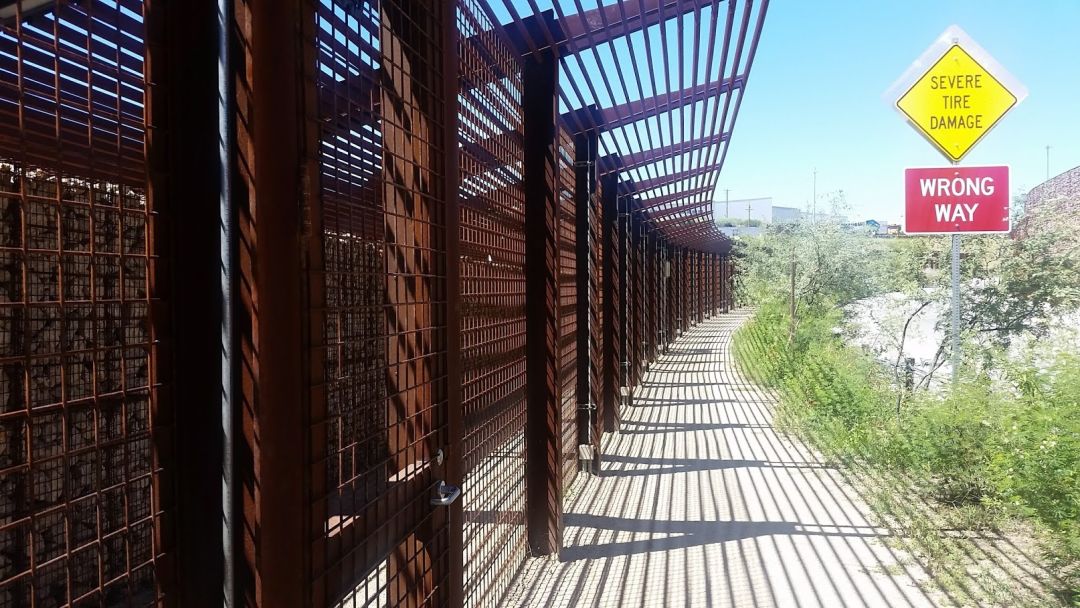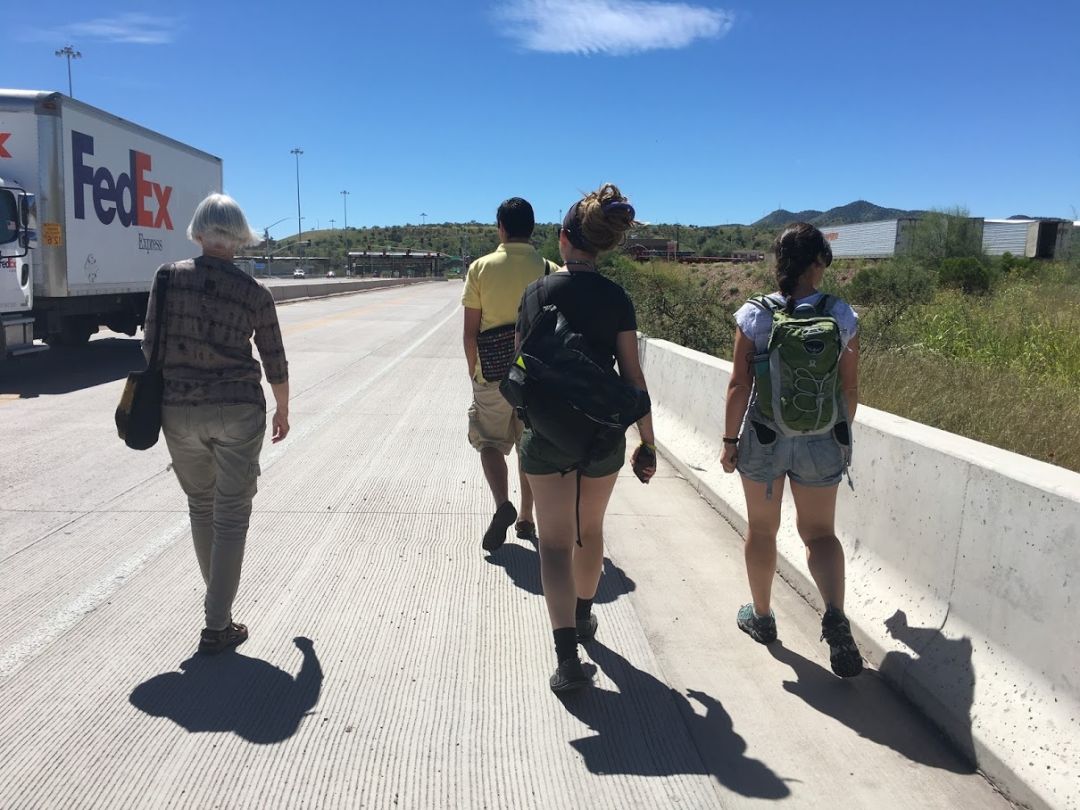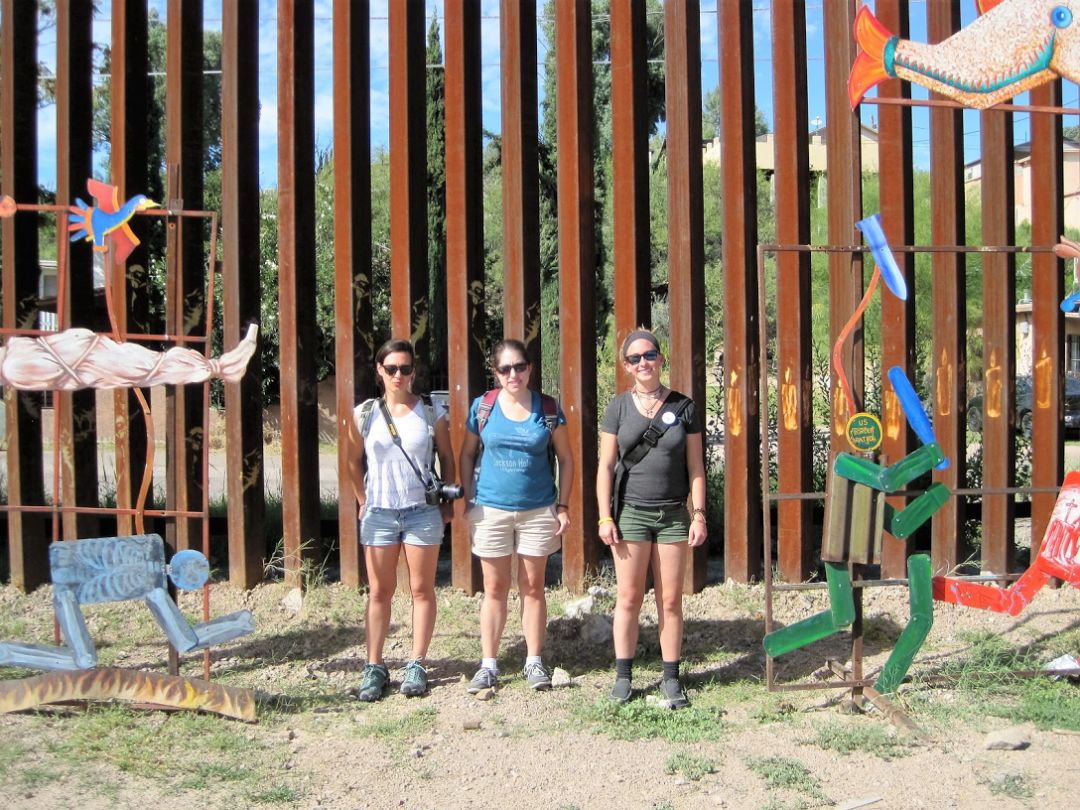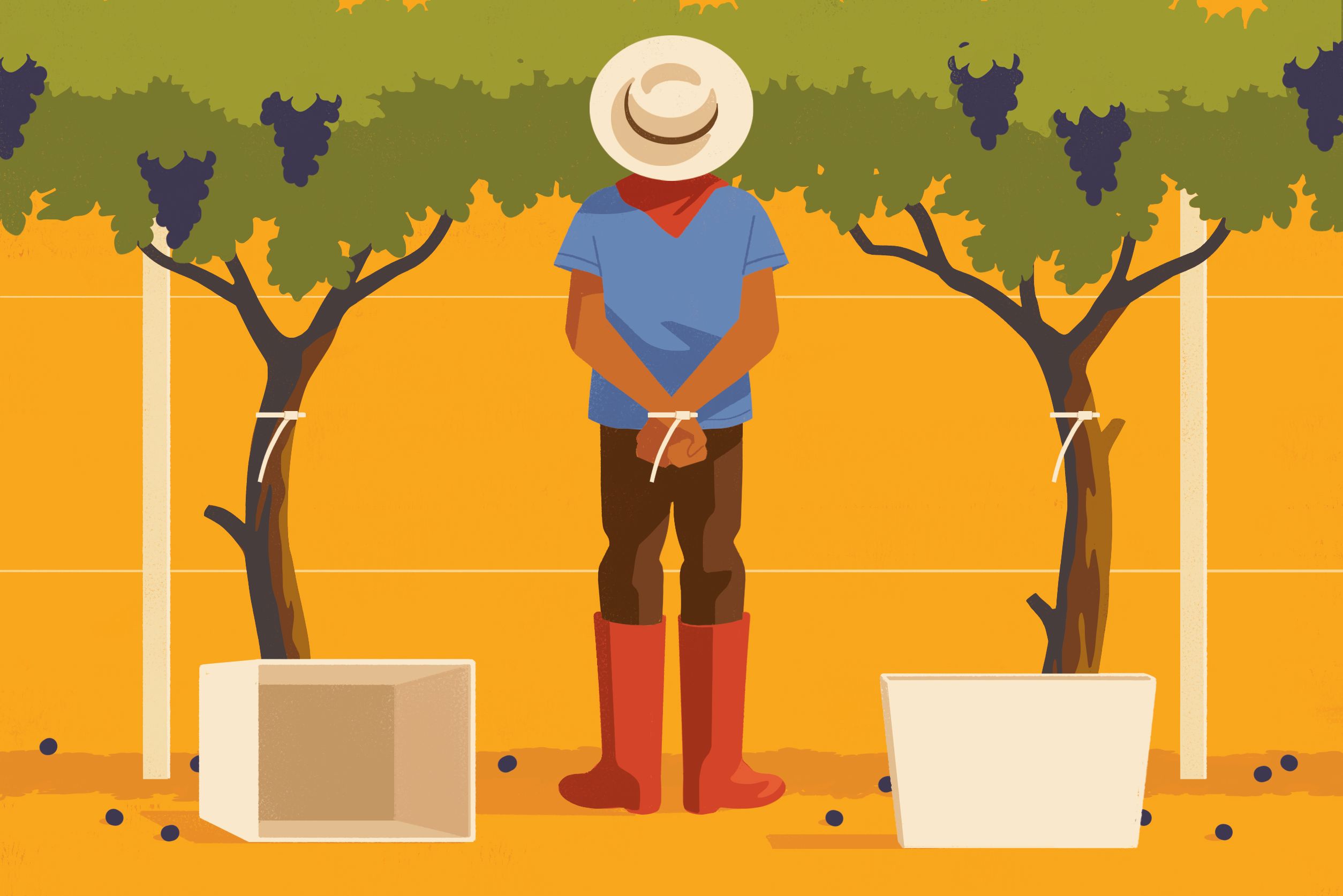These PSU Architecture Students Traveled the US-Mexico Border to Design a Better Wall

Image: PSU School of Architecture
There are still bullet holes in the wall separating Nogales, Arizona from Nogales, Mexico, where 16-year-old José Antonio Elena Rodríguez was killed, on the Mexico side, in a 2012 shooting. US police and border patrol agents said that as they attempted to stop two men from climbing over the fence, rocks were thrown at them from Mexico—so they began shooting. Ten of their bullets hit Rodríguez—who, it proved, held nothing but a cell phone.
Portland State University grad students Janna Ferguson, Alejandra Ruiz, and Genevieve Wasser recall the somber scene of the small memorial at the site. At that location along the wall, the Mexico side lies at the bottom of a pretty steep embankment.
“There’s still been no trial or closure for the community,” says Ferguson.
Last fall, the three architecture students entered an international design competition called “Building the Border Wall,” which called on designers to think up humanitarian and creative approaches to the then-Republican nominee’s call to build a massive border wall, with “one very big, very beautiful door” for those the US wants to allow in.
"It was a provocative concept for architects and designers,” Wasser says.
In September, funded by a $2,000 award from PSU’s School of Architecture, the trio embarked on a two-week trek—via plane, rental car, and foot—to see the entire length of the 2,000-mile US–Mexico border. Their journey from San Diego to the Gulf of Mexico revealed serious geographic, social, and economic deterrents to wall construction. Along the way, the trio listened to stories from residents, fellow architects, academics, environmentalists, humanitarian workers, and border patrol officers. The opinions of the broad scope of interviewees were fairly unanimous—a wall is not the solution.
“Even a border patrol agent we spoke to said that a wall would solve nothing,” Ruiz adds.

Image: PSU School of Architecture
Their interviews and experiences became the basis for a joint thesis: “Architecture as Migration: Rerendering the US-Mexico Border through the Act of Storytelling.” The so-called border, they found, is not just a single dividing line, but rather a roughly 100-kilometer-wide region, encompassing both countries, where cultures, experiences, history, and environmental resources flow in either direction. The regions with standing fences do more than just prohibit human traffic.
“Migration paths of animals don’t stop where the border stops,” says Ferguson. “Jaguars, antelope, tortoise, butterflies, bats—really any animal that migrates is prohibited from breeding and increasing their population.”
Watersheds straddling US and Mexico are at risk, too, Wasser warns. And the region’s scattered arroyos (steep-sided ravines in arid regions that fill quickly with water after heavy rains) flood frequently, making endless repairs likely. (Some estimate a wall would already cost $7.4 million per mile.)
Between its extremely high costs, the nebulousness and fluidity of the border region itself, and the resulting environmental issues, the students say a new wall might exacerbate problems in the region. Instead, the group recommends ecologically minded, binational projects that emphasize collaboration and demilitarization. Specifically, they propose biological sanctuaries that support migratory animals and mediate the strain of heavy border traffic and replacing walls and fences with parks and preservation areas. They’d also like to see improved city infrastructure for communities that live in the border region—usually the poorest of each state, often perceived as violent or criminal.

From left: Portland State grad students Genevieve Wasser, Alejandra Ruiz, and Janna Ferguson.
Image: PSU School of Architecture
“We’re not politicians, we’re architects,” Ruiz says of their recommendations.
Wasser adds that a grassroots movement of hospitality has taken root in response to the militarization and increasing politicization that present themselves in the border region (according to Harvard Magazine, the US Border Patrol is the largest arms-bearing branch of the government not including the military itself). Scattered throughout the Sonoran and Chihuahua deserts (dangerously expansive and dry regions where many attempt to cross the border by foot) are 50-gallon water holding stations—placed by one humanitarian group in particular, Humane Borders, 100 feet from where a migrant has died.
“We left for the trip with certain things we wanted to research, but we came back with such a greater understanding of the militarization and criminalization of the border,” says Ruiz. “One of our goals now is to help people see the wall differently than they do on the news and on Facebook.”




